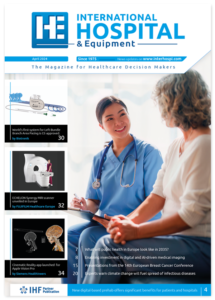Optical scanner shows potential for real-time 3D breast cancer screening
Scientists have developed a handheld optical scanner with the potential to offer breast cancer imaging in real time.
The device, developed primarily at Florida International University, uses a near-infrared laser diode source to produce an image of the breast tissues.
One advantage of the device is that it is more adaptable to breast shape and density, and that it allows imaging of the chest wall regions, which are harder to image with conventional techniques.
‘The women scanned always commented on how comfortable it was to be scanned by our device – many of them said that they didn’t feel anything,’ explains Sarah Erickson-Bhatt, an author on the paper.
The device builds an image of the tissue by mapping the optical absorption, which is altered by the concentration of hemoglobin – the protein in red blood cells. Regions with higher concentrations of hemoglobin may indicate higher blood flow due to an abnormality such as a tumour.
The optical analysis developed offers several benefits over mammography, with no ionizing radiation dose and fewer issues imaging dense tissues.
‘Eventually, we hope that physicians will be able to use this for real-time imaging of breast tissues as part of regular visits by the patients’ adds Anu Godavarty, also an author of the paper. ‘We’re current working on the mathematical tools required to process the images and produce 3D tomographic images, in order to determine tumour size and depth.’
Institute of Physics http://tinyurl.com/hb6dv3z

